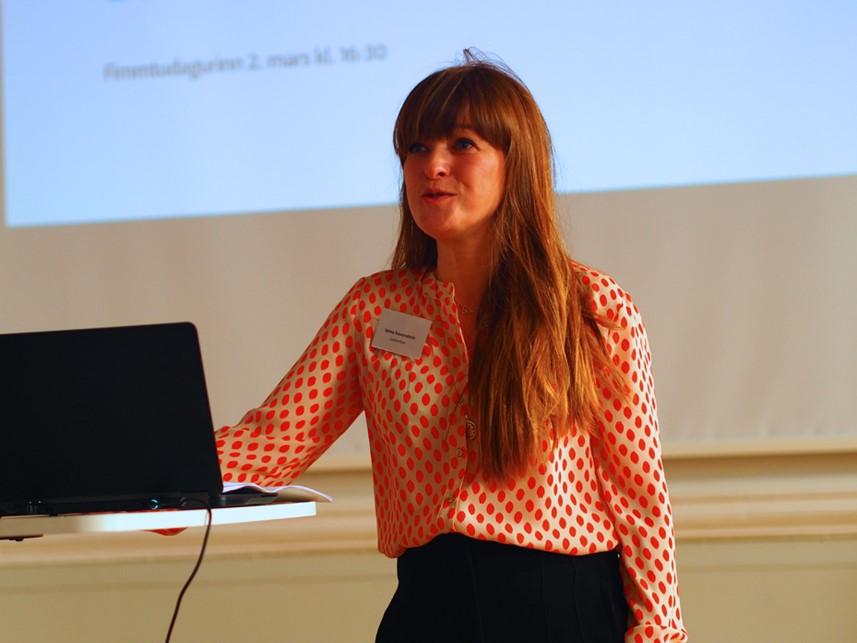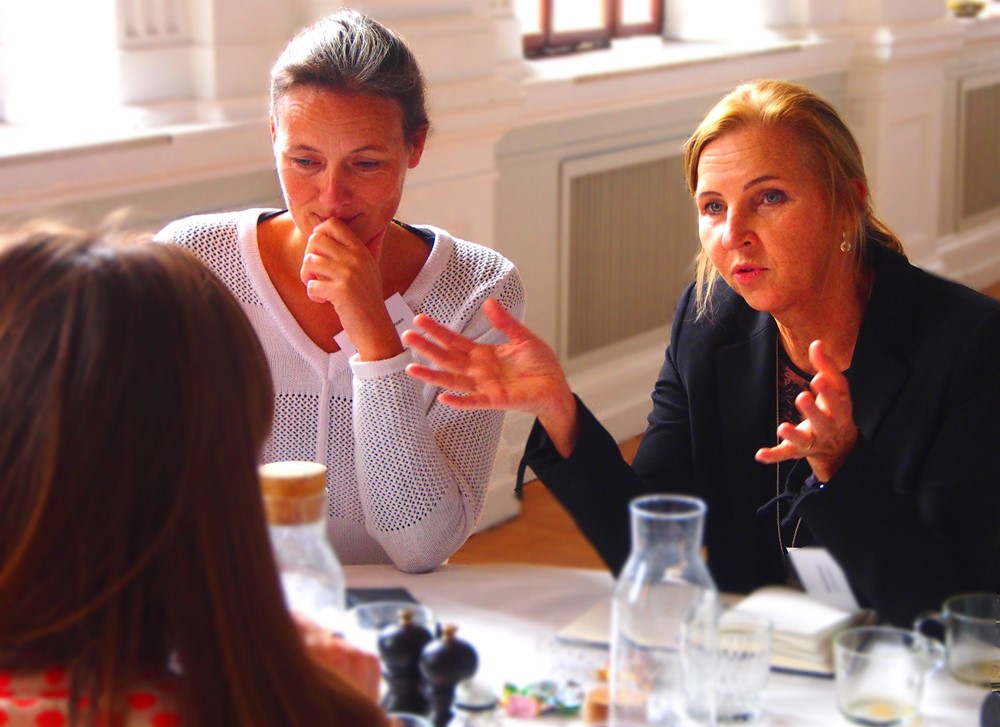
Reducing the gender gap in the energy sector
In order to ensure a more sustainable development in the energy sector, more female values must be included. This was one of the main conclusions at the annual seminar held…
In order to ensure a more sustainable development in the energy sector, more female values must be included.
This was one of the main conclusions at the annual seminar held by Nordic Energy Equality Network (NEEN) where professionals in the Nordic energy industry met to discuss action plans, and share experiences and best practices when working for gender diversity.

Left to right: Jeanette Bodi Sørensen, Energinet Denmark and Sirpa Holmroos, Svenska Kraftnät. Photo: Berit Viuf
“I came to this meeting, because after 10 years in the business, it has become clear to me that the diversity level is not what it should be” says Johannah Maher, Vice Director, Head of Global Value Engineering at Vestas, Denmark. Her statement corresponds with many of the 45 other men and women who, along with Maher, participated in the second seminar of the Nordic Energy Equality Network (NEEN) in Copenhagen, 25-26 September 2018.
Framing energy
For a long time, energy has been an issue which has been handled in business and political contexts. These are areas that traditionally have been dominated by men.
“Energy can be described in very different terms. My research shows that when energy is put into the context of industry it is a very different group of people discussing than when it is put into environmental frames,” says Research Fellow at Swedish Linköbing University Ann-Sofi Kall. “Energy involves so much more than technology and economy. It is a question of who is included, and clearly we need to include the female perspective,” Kall emphasizes.
The female approach is missing
During the seminar Kall’s conclusions were confirmed by other speakers and participants.
“The barrier for a transition to more sustainable renewable energy systems is not lack of technology. It is mindsets, structures and cultures,” Ph.D. candidate at Vaasa University Petra Berg stated.
New technology starts on micro-level with innovations in all kinds of directions, and only a few will reach the macro-level and survive as new paradigms. If a more sustainable transition is desired, the female approach should be present at all stages of innovation. Therefore, Berg emphasizes, gender diversity at all levels will be essential for going in a more sustainable direction.
Even if gender diversity seems crucial it is worth noting that it could be beneficial to take norms into account, instead of focusing on physical gender. One participant, Mehmet Bulut from Swedish Energy Agency, pointed out:
“Maybe the women who make a career in the energy industry today, replicate the habits of their male managers, and it might have to do with typical masculine and feminine norms more than the actual gender.”
Helga Jóhannsdóttir from RARIK – Iceland State Electricity agreed: “It’s an interesting question. I have been in this industry for many years, and all the bosses have been male, so I’ve always worked with men. Maybe you become blind to the existing norms, so female leaders copy male leaders.

Selma Svarvarsdottir, Head of Internal Services at Landsvirkjun. Photo: Berit Viuf
We have data – it is time for action
In Iceland the organization Women in Energy Iceland has prepared a report that reveals that on average 30 percent of the decision-making authority in Icelandic Energy companies is held by women. In Iceland the laws on gender equality in boards are strict, and this may influence the level of decision-making authority.
“Visibility is important. In Iceland the majority of students in industrial engineering are now female, but the women are not coming to the energy sector. So, it is not necessarily an educational matter, but also about making the energy sector visible for women,” said Nanna Baldvinsdottir, chair for Women in Energy Iceland.
The report also investigated the correlation between gender balance and decision-making in the Icelandic energy sector. The outcome indicated that improving gender diversity can increase the return on investment by up to 2.1 percent.
“A balanced gender ratio is a value in the sector. We have the research, and we don’t need more talk. What we need is action,” Baldvinsdottir argued.
Importance of gender diversity networks
The need for data in order to change was agreed upon by Austrian economist Christine Lins, Executive Director of from Women’s Network for Energy Transition (GWNET). She explained the background for forming the network:
“When I went to meetings and conferences, I often found myself being the only woman in the room. I felt frustrated that there were so few women in the energy sector, so I co-founded GWNET to make women more visible, especially at management level.”
Like Women in Energy Iceland, one important function of GWNET is to collect data about gender diversity in the energy sector. So far global data collected by the organization confirms that the major obstacle for women in the renewable energy sector is the dominating perception of energy as a matter of business and technology. A growing pay gap and a continuous imbalance in STEM education are also shown to have a big impact.
To include more women, the network has a workplan that contains female mentor programmes, entrepreneur initiatives for women, and lobbying and communication (including blogs, best-practice stories and a database over women speakers).
By connecting networks around the world, gender diversity can hopefully get more attention in the future, and NEEN has the potential to represent women in the North in this process.
Walk it like you talk it
If the conclusion of research is that gender diversity is an advantage when working towards a more sustainable and profitable energy sector, how are things going to change on a practical level?
In Iceland the state-owned Landsvirkjun, which processes 75 of the electricity in Iceland, is working actively to include more women. The company invited in a consultant bureau who could investigate all aspects of the culture.
“To bring in a consultant was an important aspect for our transformation process. The reaction would have been totally different if the initiative had come from the management. By inviting in a neutral partner, people engaged,” Head of Internal Services Selma Svarvarsdottir explained at the seminar.
This led to an action plan that includes technical training, designing of space, poster-campaigns, wage policies and strategies for introducing role models. So far, the ratio of women in the organization has increased, but the process has been slower than expected.
“This is a journey and we have to stay focused. It is also important to remember, that women are not better than men, it is the diversity that is advantageous,” Svarvarsdottir says.
This was recognized among other participants. Sirpa Holmroos had experience from her company Svenska Kraftnät, which have grown dramatically during the last few years:
“You can do a lot about the ratios when you recruit. But you also need to work with culture and define what behavior you want. Whenever you see things that are good you must ask yourself: what can I do to support this behavior? And you have to have the courage to avoid the behavior you don’t want in the company, and that starts with the leaders,” she says.
Article by Berit Viuf. Berit is an independent journalist on subjects related to research and science. Besides her journalistic education she holds a Master’s Degree in Social Science, Technology and Environment.
